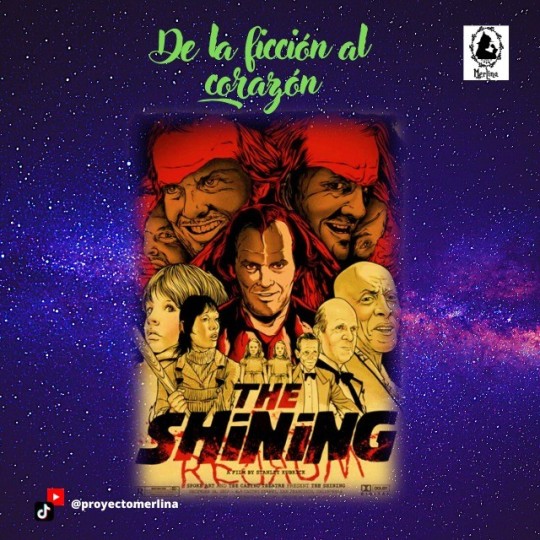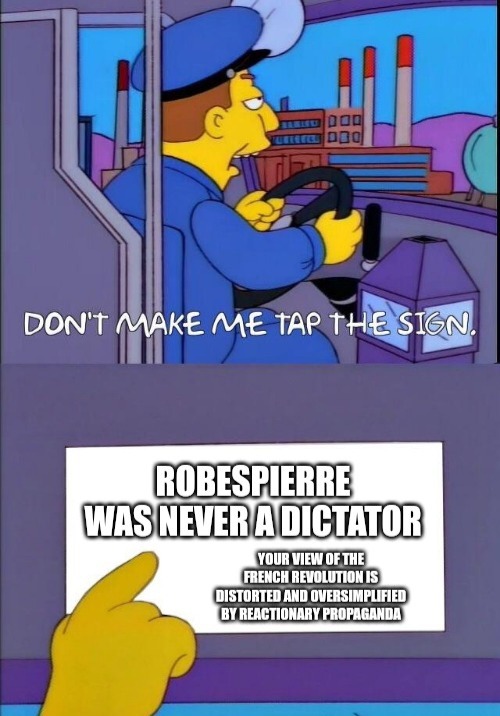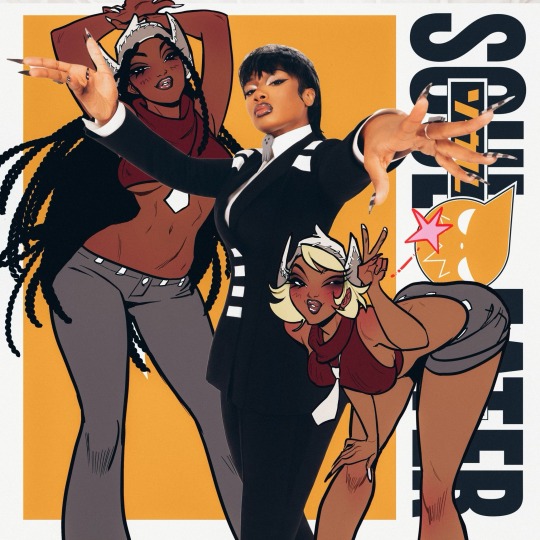#literaryreference
Explore tagged Tumblr posts
Text

lmao you never have to apologize for enjoying parts of musicals. I Understand and I also appreciate *some* new info on musicals otherwise my knowledge would be be perpetually 20 years out of date. also the gifsets were really good
#reply#literaryreference#also the alternative would be negative commentary on someone’s wonderful gifsets…#this is giving me more motivation to make a for-fun ppt about rating historical rpf musicals#talking abt musicals
8 notes
·
View notes
Text
We actl DO have some idea what ancient audiences read! I'm not going to cite anything here because 1)this was never my specific field so I don't have anything specific in mind and 2)I don't feel like putting that amount of time into this reply, but we've found quite a bit of, essentially, courtroom dramas in North African trash dumps from the Roman era(they actl seem to have had a pretty big impact on Christian Martyr literature!). So: Romans probably would have been big fans of "Law and Order" XD XD
And then there's the "Romance Literature"(literally "Roman Like Literature") of middle and late medieval times(so like: Arthuriana), which has long been known to be inspired by Roman Adventure Fiction. Roman Adventures were bscl colonial fic, and our own pulp Adventure stories aren't TOO far off, from what I've heard: Good Roman Man ends up Stranded Amongst the Foreigners, Woos the Exotic Princess, Kills the Evil Stereotypes, and Makes a Fortune before Returning to Rome And his Upstanding Roman Wife. I've never actl READ a roman adventure, but I've heard/read the Sinbad stories are a good example of what this stuff was like.
Also: Heroic literature. Obvsl this includes The Illiad, The Odyssey, and the REAMS of knockoffs and expansions both had(very little of which survived down to us tho we know OF it from surviving commentaries), but it also includes a fairly unique genre of fic; Heroic Philosopher Stories. The archetype of this is Plato's Socratic writings, though it seems to have, in Roman hands, leaned more heavily on the Martyrdom aspect of Socrates's tale, and less on the philosophical discussion. Again: this seems to have had a big influence on early Christian martyr literature.
i do think theres something sad about how largely only the literature that's considered especially good or important is intentionally preserved. i want to read stuff that ancient people thought sucked enormous balls
#catominor#literaryreference#Ancient Literature#Pulp Fiction#Rome#History#Classical Studies#reblog replies#Our Staff
87K notes
·
View notes
Link
#1980smusic#Alternativerock#Britishmusic#Cultfollowing#Emotionaldepth#Iconicband#Identity#Indiemusic#Janglyguitars#JohnnyMarr#Literaryreferences#Loneliness#Loveandheartbreak#Manchester#Melancholy#Morrissey#Musicalinfluence#Nonconformity#Poeticlyrics#Socialcommentary
0 notes
Photo

"The Shining" o "Insólito esplendor" es una novela de terror clásica de Stephen King, publicada en 1977. Cuenta la historia de Jack Torrance, un escritor en crisis que acepta un trabajo como cuidador en el Hotel Overlook durante el invierno. Jack lleva a su esposa y a su hijo pequeño con él, pero la soledad y el aislamiento comienzan a afectar su cordura. El hotel parece tener una vida propia, y los eventos sobrenaturales y terroríficos comienzan a ocurrir. La novela ha sido adaptada a una película icónica de Stanley Kubrick en 1980, y una secuela publicada por King en 2013. ----------------------------------------- Aquí les va algunos datos curiosos: - King se inspiró en su propia estadía en el Hotel Stanley en Colorado para escribir la novela. Según la leyenda, el hotel está embrujado por los espíritus de los antiguos huéspedes, y King tuvo una experiencia aterradora en una de las habitaciones. - La novela contiene varios elementos sobrenaturales, como la habilidad de Danny de ver visiones y comunicarse telepáticamente con otros. King se inspiró en su propia experiencia de haber tenido visiones cuando era niño. - El personaje de Jack Torrance está inspirado en el propio padre de Stephen King, quien luchó contra el alcoholismo y la violencia doméstica. - El libro contiene varias referencias a la poesía y la literatura, incluyendo a Shakespeare, Tennyson y Coleridge. La famosa frase "All work and no play makes Jack a dull boy" ("Todo trabajo y nada de diversión hacen de Jack un aburrido") que aparece en la película, es una referencia al proverbio inglés. ------------------------------------------ "El Resplandor" es una obra que invita a reflexionar sobre temas profundos y a veces incómodos de la condición humana, y que plantea preguntas relevantes sobre la naturaleza de la realidad, la salud mental y las relaciones familiares. #TheShining #StephenKing #StanleyKubrick #OverlookHotel #ShelleyDuvall #JackNicholson #Mystery #Horror #HorrorMovies #CinematicCuriosities #LiteraryAdaptations #JackTorrance #DannyTorrance #OverlookHotel #HorrorFiction #Supernatural #LiteraryReferences #Alcoholism #FamilyRelationships #CuriosidadesLiterarias #CuriosidadesCinema (en Planeta Tierra) https://www.instagram.com/p/Cq_1eqWuHa7/?igshid=NGJjMDIxMWI=
#theshining#stephenking#stanleykubrick#overlookhotel#shelleyduvall#jacknicholson#mystery#horror#horrormovies#cinematiccuriosities#literaryadaptations#jacktorrance#dannytorrance#horrorfiction#supernatural#literaryreferences#alcoholism#familyrelationships#curiosidadesliterarias#curiosidadescinema
0 notes
Photo

XANTHOUS KING JEREMIAH
Master pyromancer and ruler of none, the tattered King in Yellow ruminates on the cold hues of the forlorn Painted World of Ariamis.
If you listen closely you may still hear the echoes of a once great, old monk, yearning for a vessel.
#xanthous#darksouls#painted#world#ariamis#thepaintedworld#painting#pyromancer#fire#yellow#art#kinginyellow#literaryreference
9 notes
·
View notes
Text
@literaryreference

Made this for convenient use
#i am @ ing literaryreference bc we accidentally recreated this situation in the french revolution LARP at our school#we got strung up by the more-radical faction and basically forced to do their bidding on pain of death#meanwhile in said unhinged AU the king actually managed to escape by rhe skin of his teeth & taunted us from across the hall i mean England#we went to target & bought natching discounted red turtlenecks it was a whole Thing lmao#fond memories
9K notes
·
View notes
Photo

Blued Moon . #moon #fullmoon #night #nightsky #colorindarkness #pixilated #literaryreference #linguisticreference #editedtodeath https://www.instagram.com/p/B1MS8b6pHar/?igshid=6qgzbqolhhz4
#moon#fullmoon#night#nightsky#colorindarkness#pixilated#literaryreference#linguisticreference#editedtodeath
0 notes
Text

Group projects irl
#the iliad#homer#homer the Iliad#dark acadamia aesthetic#dark academia#academia#school#online school#covid 19#covid#literature#literaryreferences#litstudies#donnatartt#2020#the goldfinch#the secret history#the odyssey
12 notes
·
View notes
Text
I use spotify but I don't approve of it; as convenient as it is to use, the artists get paid almost nothing and I can't count on the music I want to listen to being or staying available. Bandcamp pays the artist more for each play so I'm trying to shift there. That ibroadcast thing sounds more like what I really want, though - ty for the rec @literaryreference!
im very curious as to what people use as someone who doesnt use spotify
#I like buying songs so I own them#can't afford to do it as much as I would like#but it makes me happy to contemplate my collection
7K notes
·
View notes
Text
vaultedthewall replied to your post : ah yes, all my friends have all changed their URLs...
Never change url to maintain brand recognition squad.
we are nothing if not god damned consistent /hifive
literaryreference replied to your post:
ah yes, all my friends have all changed their URLs...
Especially when they change their URLs and icons at the same time, and then I’m just like “who are you and why are you on my dash? Did I follow someone by accident on mobile again?”
yeah protip: if I unfollow or even block you, it's probably not because I hate you, but because I am an idiot and I forgot that I actually know who you are. like how am I to know that gaysexlapiz is the same person as xXDongLover69Xx or whatever the heck kids are calling themselves these days? i’m too old for this. back in MY day we chose ONE interbuttz handle and we stuck with it, unlessn. some jackass had already taken it, in which case we used a predictable backup. get off my lawn. blarg. like several of my friends recently changed both their URLs and their icons (and a few just changed URLs OR just changed icons) and I’m like “who the fuck is everyone. where the fuck am i. did i end up in an alternate universe again. what’s going on. ????????????????????????
1 note
·
View note
Text
no, miss appleton did not single-handedly ruin japanese soy sauce forever
there's a popular post going around this week about a ghq (general headquarters, the administration of the american occupation of japan after wwii) employee, a certain ms. blanche appleton, single-handedly changing the taste of soy sauce. while her story is fascinating for sure and i await further developments on the part of the op, and had a hand in the history of soy sauce, the premise is quite a bit exaggerated, and the general narrative so far in the framing by the op somewhat problematic.
tl;dr: as with most things, this is a confluence of factors, with producers, scientists, politicians, (possibly underworld,) and administrators all having their own agency in this story. i find it unusual to sideline so many parties in favour of presenting a single foreign administrator calling the shots in the op's posts.
i've made an initial response here. i will continue my findings in a separate post here.
1. jack daniel's is swill, but it's still whiskey
i think i can distill my issues with this plot so far down to one statement in the original post:
There should be records of her policies, there should be legal documents in America which record how she apportioned out American exportation of soy beans to Japan, there should be sources talking about this woman's ability to transform Japan's soy sauce production so heavily that today only 1% of all soy sauce is made with pre-WW2 traditional techniques.
this transformative impact of one administrator is entirely overstated. this comment led me to a promo blog post where some of the original claims can be seen, and the op mentions that traditional soy sauce was made in kioke barrels, and the this method of production has dropped to about 1% now. this is true, but it appears that at least one source put the decline as starting around the end of the edo period (xvii-xix centuries). [1] sources traceable to yamaroku puts the decline more recently, at about a century ago [2, 3]
this japanese paper on fermented food production is quite clear in stating that wodden barrel production declined from the meiji period (1868-1912) onward.
江戸時代までに一般化した木桶・木樽の使用形態は、明治期以降、一般の生活や各種製造現場で近代化が進む中、コンクリートや金属、プラスチック、合成樹脂等の材質によって代替されていく。 The use of wooden vats and barrels, which had become common by the Edo period, was replaced by materials such as concrete, metal, plastic, and synthetic resin from the Meiji period onward, as modernization progressed in ordinary life and various manufacturing sites. (deepL translation)
another source from a professor on food production in japan suggests that shodoshima (where yamaroku is made) is the area that has most completely preserved the wooden vat method of production.
this survey (oguri) written by a member of the national museum of nature of science in tokyo dates the supplanting of traditional method in more industrialized regions by 1913
1913(大正2)年:栂野は「最新醤油醸造論」の中で、九���、中国地方では桶の代わりに煉瓦又は石でタンクを作り使用していると記述。 1913 (Taishō 2): Tsugano, in his "The Latest Soy Sauce Brewing Theory," wrote that in Kyushu and Chugoku regions, instead of vats, tanks were made of bricks or stone and used. (deepL translation, p.148)
1918年:西二の蔵(ヤマサ印)の建設に当たり研究中の内面塗料が完成したので、これを採用し仕込桶を角型のコンクリートタンクに改めた。 1918: The internal [coating] that was being researched for the construction of the Nishi Ni no Kura (Yamasa brand) was completed, and this was adopted and the brewing vats were replaced with square concrete tanks. (deepL translation with edits from @literaryreference, see translator's note 3, p.148)
i think it bears repetition that soy sauce production was industrializing as japan was industrializing from the meiji to early shōwa periods. as alluded to in the title, a lot of modern soy sauce is like jack daniels: industrial products that evolved from traditional methods alongside a nation's overall development.
2. babe wake up, a new semichemical soy sauce just dropped, and appleton's role in history (a corroboration of @/inneskeeper)
it seems like the plot on the original poster's part has gone to the american side, so let's try to follow the us-japan interaction but from japanese sources.
the survey cited earlier (oguri) has a lot of information that supports the original post. blanche appleton did exist, and does appear in more anecdotes from that era of the soy sauce industry.
(also, this bibliography has more sources on her time in japan, will require institutional access to japanese universities)
to start, there are two methods of semichemical soy sauce production. the first, 新式1号法 shinshiki 1-gō method (i will call it sc1) was invented in the taishō era (1912-26).
大正の末期頃になると、酸やアルカリの化学薬品を併用することによって、速醸の目的を達成しようとする研究が盛んに行われ、その代表的な「新式1号」が出現する。 Toward the end of the Taisho era, there was a flurry of research into the use of acid and alkali chemicals in combination to achieve the goal of fast brewing, and the "Shinshiki No. 1" [sc1] appeared as a representative example of such research. (deepL translation, p.158)
in the time immediately after the war, there was a shortage of supplies, and its allocation was controlled by the americans
駐留軍の総司令部 GHQ(General Head Quarter)は、1948年の春調味料の原料として「エロア資金」(占領地域経済復興資金)により、大豆ミール2万tを放出する方針を打ち出した。このことにより、その配分をめぐって醤油業界とアミノ酸業界は熾烈な競争をすることとなる。 The General Head Quarter (GHQ) of the stationed army announced a policy of releasing 20,000 tons of soybean meal as a raw material for seasonings in the spring of 1948 through the EROA (Economic Rehabilitation in Occupied Area) Fund. This led to fierce competition between the soy sauce and amino acid industries for its allocation. (deepL translation with edits by myself, p.159)
the "amino acid industry" mentioned refers to the monosodium glutamate (msg) industry (glutamate is the ion of an amino acid). essentially, in the early 20th century, both msg and soy sauce (and chemical "soy sauce") production methods have converged to all requiring many soybeans due to their protein content and fermentation properties.
this is where appleton makes her entrance:
GHQは両業界の調整窓口として、「経済安定本部」の経済科学局で調味料と乳製品の需給を担当していたミセス・ブランシェ・アップルトンをその任にあてた。アップルトンは、醤油醸造協会の茂木啓三郎とアミノ酸業界の大内鋼太郎を招いて意見を聴取し、原料の配分を「醸造醤油2、アミノ酸業界8」とすることを内定し、上司のマーカット局長に報告した。この報告内容は醸造醤油にとっては死活問題であったが、内定の根拠は次のようなものであった。 GHQ assigned Ms. Blanche Appleton, who was in charge of the supply and demand of seasonings and dairy products in the Economic and Science Section of the "Economic Stability Headquarters," (?) to serve as the coordinating contact between the two industries. Appleton invited Keizaburo Mogi of the Soy Sauce Brewers Association and Kotaro Ouchi of the amino acid industry to hear their opinions, and informally decided that the distribution of raw materials would be two for brewing soy sauce and eight for the amino acid industry, and reported this to her boss, Maj. Gen. W. F. Marquat. The content of this report was a matter of life and death for brewers' soy sauce, but the rationale for the informal decision was as follows. [...] (deepL translation with edits by myself p.159)
essentially, appleton originally intended for only 20% of the soybean meal to be handed out for soy sauce due to its relatively inefficient usage of materials compared to msg production. this would've crippled the existing soy sauce producers, and they set out to find solutions to save their industry.
醸造醤油側は、醸造醤油の「日本人の食生活における重要性や醸造醤油そのものの品質の良さ」等を強調したが、GHQはただ「脱脂大豆が有効に活用されるのはどちらか」という尺度だけで判断したのである。このような醸造醤油の存亡の危機を救ったのは、もくもくと研究に携わっていた技術陣が開発した「新式2号法」であった。本法を発明したのはキッコーマンの館野正淳、梅田勇雄等である。新式2号の製法は新式1号と同様に、蛋白質を弱酸でペプトンやペプチド程度まで分解し、その後は麹の酵素により分解してアミノ酸の形態まで持っていく半化学、半醸造による醤油の製造法である。 The brewing soy sauce side emphasized the importance of brewing soy sauce in the Japanese diet and the quality of the soy sauce itself, but GHQ made its decision based solely on the basis of "which [industry] would use the defatted soybeans more effectively". What saved brewed soy sauce from the brink of extinction was the "New Formula No. 2 method" developed by the technical staff who had been working diligently on the research. The inventors of this method were Masajun Tateno and Isao Umeda of Kikkoman Corporation. As with Shin-Shiki No. 1 [sc1], the Shin-Shiki No. 2 [sc2] method is a semi-chemical, semi-brewing method for producing soy sauce in which proteins are broken down to peptones and peptides with weak acids, and then decomposed by enzymes from koji mold to the form of amino acids. (deepL translation with edits by myself and @literaryreference, see translator's note 4, p.159)
this development, the invention of the 新式2号法 shinshiki 2-gō method (sc2), led to another round of discussions:
ミセス・アップルトンは「キッコーマンが画期的な技術を開発した」ことを聞き、新法による醤油とアミノ酸液による化学醤油を消費者に提示し、その調査結果に基づいて決定を再考しようと上申書を提出した。醤油の 味、使用テストは神奈川県の鎌倉市と逗子で行われたが、消費者の8割が新法による醤油を支持した。この結果に基づき、アップルトンは両業界で話し合って結論を出すように「正田・大内会談」を開かせた。 Mrs. Appleton heard that "Kikkoman had developed a breakthrough technology" and submitted a petition to reconsider her decision based on the results of a survey that presented consumers with both the new method of soy sauce and a chemical soy sauce made with amino acid solution. Taste and use tests of soy sauce were conducted in Kamakura and Zushi, Kanagawa Prefecture, and 80% of consumers supported the new soy sauce. Based on these results, Appleton had the "Shoda-Ouchi Conference" held so that the two industries could discuss and reach a conclusion. (deepL translation, p.160)
this source seems to suggest that the original decision was under higher-ups' pressure:
当初の提案2対8のアミノ酸業界絶対優位の配分比率は、「新式2号法」の出現により、最終的にGHQは「正田・大内会談」の「7対3協定」を認め、ここに醸造醤油の歴史的危機は回避されることとなった。醤油業界のミセス・アップルトンの評価は従来大変厳しいものであったが、後の調査で彼女は醸造醤油の良き理解者であり、当初の配分比率も上司の強い指示に抗しきれず提案したものであったようである。再度の上申は、彼女の日本の伝統的な醸造醤油への深い理解と思い入れによるものであったと考えられる。 As for the proposed allocation of 2 to 8, due to the [sc2] method, GHQ ended up deciding on the “7 to 3 Agreement” from the “Shoda-Ouchi Conference” instead, thus averting the historical crisis of brewed soy sauce.Although the soy sauce industry had been very critical of Mrs. Appleton in the past, later investigations revealed that she was a firm supporter* of brewed soy sauce and that the original allocation ratio was a proposal she made because she could not resist the strong instructions of her superiors. It is believed that her renewed offer was due to her deep understanding of and commitment to the Japanese tradition of brewed soy sauce. (deepL translation with edits from myself and @blackamite, see translators' note 1, p. 160)
the term 良き理解者 "good friend" (see bolded) i think could mean connoisseur or enjoyer here, will need help in clarifying.
その後醤油醸造協会の正田会長は、1948(昭和23)年7月23日に「新式2号法」の特許公開を懇請し、当時の中野社長の���断により、「新式1号」に続いて「新式2号」についても無償で業界に公開されることとなった。同年8月から講習会が全国12ブロックで開催され、約2,500社の業者が技術を習得した。 Later, on July 23, 1948, Mr. Shoda, president of the Soy Sauce Brewers Association, requested that the patent for the [sc2 method] be made public, and following the decision of then [Kikkoman Inc.] President Nakano, the [sc1 and sc2 methods] were made public free of charge to the industry. In August of the same year, training sessions were held in 12 blocks throughout Japan, and approximately 2,500 companies learned the technology. (deepL translation with edits by myself, p.160)
the main sources the survey used are a manuscript, 醤油醸造技術の近代化 by 永瀬一郎 Ichirō Nagase, kikkoman inc.'s own historical record (キッコーマン株式会社八十年史; a shorter version can be found here), and a history of choshi shoyu inc. (銚子醤油株式会社 社史). i think this confirms a lot of information the original post put out there about ms. appleton and her involvement with soy sauce. plus, it shed more light into how exactly she interacted with the condiment industries.
perhaps @/inneskeeper will find some shady dealings in their research; when you mix a foreign military force, the collapse of existing institutions, and social upheaval, you're likely to find corruption. ill keep my eyes peeled for that development.
3. no, kikkoman is not "fake" soy sauce, but you might be able to find some echoes of the past
so what happened to semichemical soy sauce now? the survey document does not track its usage after its invention and at the surface level, it seems that the original claim was right, the semichemical method has persisted since the american occupation and we're all just drinking sussy sauce.
in fact, this seemed so obvious that this rumour circulated in japan and was debunked by aficionados two years ago.
the link to kikkoman's own record earlier states that sc2 sauce was discontinued in 1970, and the japanese blog post above repeats that, adding that it has reverted back to honjōzō (本醸造) sauce. this paper in the journal of the brewing society of japan (日本醸造協会誌) has this to say about what became of sc2 sauce:
また,キッコーマンの新式 2号しょうゆ製造法の特許が公開されたのも 1948年で, しょうゆ業界は混合醸造しょうゆおよび混合しょうゆを製造することにより効率よく旨味の強いしょうゆを安価に製造し, しょうゆ原料不足の時代を乗り切ったと考えている 。現在,大手メーカーで��食の安全性や本物志向から混合醸造しょうゆおよび混合しょうゆの製造をやめ本醸造しょうゆだけを製造している 。一方,全国の中小しょうゆメーカーでは,製造設備を全て本醸造しょうゆに切 り換える資金力に乏しく.一旦,消費者に定着した混合しょうゆのニーズにより本醗造しょうゆに切り換えることが出来ず,現在も混合しょうゆが主力商品となっているのではないかと考えている 。 The patent for Kikkoman's new [sc2] soy sauce manufacturing method was also published in 1948, which allowed the soy sauce industry to overcome the shortage of raw materials for soy sauce by producing mixed brewed soy sauce and mixed soy sauces efficiently and inexpensively. Currently, major soy sauce manufacturers have stopped producing mixed brewed soy sauce and mixed soy sauce, and are producing only honjozo soy sauce, due to food safety and the desire for authenticity. On the other hand, small and medium-sized soy sauce manufacturers nationwide do not have the financial resources to convert all of their production facilities to honjozo soy sauce. Once a demand for mixed soy sauce has taken root among consumers, they are unable to switch over to honjōzō soy sauce, and even now, it's possible mixed [kongō or kongō-jōzō] soy sauce might be the top [soy sauce] product. (deepL translation with edits from myself and @literaryreference, see translator's note 2, p.78)
the three types of japanese soy sauce production methods available today are honjōzō (本醸造, fully fermented), kongō-jōzō (混合醸造, mixed fermented with amino acid added prior to fermentation, closest to sc2 method), and kongō (混合, one of the previous two types with additives). [wiki, academic source] these production methods are in parallel to the traditional varieties of sauce, which rather describe the mash and added taste; these elements of the production, rather than the fermentation process, are usually what define the lineage of the sauce in both japan and other soy sauce-producing cultures.
instead of supplanting "genuine" fermented soy sauce, the industrial descendants of sc2 sauce have become their own type of sauce and have carved their own niches in the consumer market. as someone who is not from japan, i would be careful about making any judgment on whether it is "authentic".
4. clarifications
there were a few statements by the original poster that i think need further context for a more accurate understanding. any bolding and italics are mine.
During World War 2 there was a push to industrialize the Japanese soy sauce industry to be better for mass-production. This innovated the chemical fermentation technique and the semichemical fermentation technique utilized by Kikkoman; rather than ferment for four years in gigantic cedar barrels, kioke, instead fermentation takes place for six months or a year in stainless steel barrels which utilize electrolysis to artificially speed up fermentation processes.
the first part is correct, but the word "rather" introduces a false dichotomy; soy sauce production is very diverse and progresses at different paces in different regions (see part 1 of this post). the sauce op has is simply one from a region that has kept their manufacturing method unchanged.
"four years" is arbitrary: different producers have different fermentation periods.
the last part of the statement is not universally true of industrial production; ac current may be used in brewing.
A single American woman named "Ms Appleton" was given total control of apportioning all American soy bean rations to companies, how much, and to who. She had no knowledge of soy sauce, allegedly.
we can lay that last part to rest. it appears that she does. i will also have to mention that "soy sauce" has been imported from china to the usa since the 30s.
She apparently had so much power over Japanese soy sauce production that she could singlehandedly shape its future by threatening to not give soy beans to any company, family, or factory which did not utilize her specific requirements of semichemical fermentation (reduced from chemical fermentation, since it was that abhorrent). These days, the term soy sauce is distinct from traditional shoyu, and requires distinguishment because of such a radical difference the two products are.
is girlboss applesauce really that powerful on her own? this statement was not wrong, but she did have the military that just nuked japan behind her.
did appleton specify one method over others? probably, but i think the dependency went the other way: the invention of sc2 sauce was the only way the industry could be efficient enough for ghq standards.
that last part is just straight up wrong dawg what the hell i was nicer in my first reply but im not feeling it today
[...] Because there should be way more information on her if this was the case; she was apparently powerful and influential enough during the occupation that she could singlehandedly enforce whatever arbitrary rules she wanted on the soy sauce industry and they had to comply or else have no product at all. That level of power is fucking insane. Imagine having so much raw influence over Japan that you could order them to completely renovate and change how they produce and make SOY SAUCE, literally one of if not THE most important thing in Japanese culinary history--[...]
holy exaggeration batman, this is almost insulting. as with most things, this is a confluence of factors, with producers, scientists, politicians, (possibly underworld,) and administrators all having their own agency in this story. it is incredibly unusual to sideline so many parties in favour of a single foreign administrator calling the shots.
5. what now?
i think there's much to be found out about appleton's dealings, and it would be an interesting story if there did end up being underworld dealings in those negotiations coming to light. i think it is a fascinating slice into that era and how society and institutions interacted in such a fraught situation. overall, i encourage @/inneskeeper's historian work.
that said, it is very important for people to not put a narrative ahead of the facts. i think it is human nature to be attracted to stories that have a clear causality and linearity, but it is something we need to be very careful about when communicating history to a large audience. to anyone who would like to present their findings, consider what your framing of events imply about the state of the time and place you research, and if you are doing all parties justice.
and for the love of god, cite your sources.
if there are any translation issues, please reach out to me and i will edit accordingly and post errata.
erratum 1: jack daniel's is tennesee whiskey, not bourbon, thanks @drdementogrl.
translators' note 1: 良き理解者 could also be translated more literally to “good understander,” thank you @blackamite, @monstrousgourmandizingcats, @leatherbookmark, and others who have given similar notes.
erratum 2 and translator's note 2: @literaryreference has indicated that 一旦,消費者に定着した混合しょうゆのニーズにより本醗造しょうゆに切り換えることが出来ず,現在も混合しょうゆが主力商品となっているのではないかと考えている 。 is more equivocal and did not state an outright larger popularity for kongō/kongō-jōzō type brewing, so it's possible it might be the top product. they also suggested removing redundancies and pointed out a copying mistake from the original source (left out a bit of the japanese text).
translator's note 3: @literaryreference let me know that 塗料 would more accurately be interpreted as "coating" and also gave me a link of the sauce brand mentioned.
translator's note 4: @literaryreference has provided a better translation for GHQはただ「脱脂大豆が有効に活用されるのはどちらか」という尺度だけで判断したのである, and i have made edits from their translation as well for better context.
4K notes
·
View notes
Photo

I see what you did there! #literary #literaryreferences #CLT #NC #Poe #TheGreen #art #EdgarAllanPoe #Charlotte @charlottenc https://www.instagram.com/p/CDWxpjGpPAc/?igshid=yuylqf7d4136
0 notes
Photo

HETRODEMBRACHIHELOT ASCOIDEIA: A condition where you believe that someone else is using your left hand when you are not looking. It doesn't matter if the hand is actually out of your control or not. Symptoms include unexpected cookies, social media posts you don't remember putting up, and waking with shaving foam in your hand. Often the arm has an Anthauma (curse), so a simple pharmacthaumic is needed to regain control, though slapping the person who cursed your arm until they remove the Anthauma is also known to be effective. People who don't have an underlying issue are given a tracker so they can tell where their hand is at all time. It should be noted there was a slew of reports of this condition among amputees in the area of the University of Ingolstadt in the 18th-century.
0 notes
Note
https://fouralarm-fire.tumblr.com/post/668115748968873984/satanic-lymphatic-literaryreference-the-peel-is
For the LNN. Matt Ryan interview on his new character, Gwyn!
-HW
ahh HW i think thats the wrong link?
i'm sorry i shld have checked earlier lol i'm abt to publich before i go to sleep - i'll def include it next time tho!!
4 notes
·
View notes
Text
literaryreference said: That really sucks, I’m sorry. :( Not quite the same thing, but I have exercise-induced asthma and the masks make that easier to set off too. Some people seem to think that only rightwing douchebags and really vain people would possibly complain about the masks, and like, I’m not gonna not wear it, I just look forward to being able to walk two blocks without becoming unable to breathe, someday.
Wow, I’m really sorry about that. Asthma was one of the things I was most worried about when it became clear that masks were gonna be the way to go.
I really hate that we rapidly came to an oppositional paradigm saying that masks are anything but easy and comfortable is taken as a tacit criticism of mask-wearing at all, or an admission everybody secretly thinks we shouldn’t be wearing them, when being frustrated with something that is both new and difficult in a lot of ways because doesn’t actually change the fact that we all need to do it.
1 note
·
View note
Text
@literaryreference eyyyyy (here's some finger guns to go with)



Megan thee Stallion as Death the Kid
29K notes
·
View notes